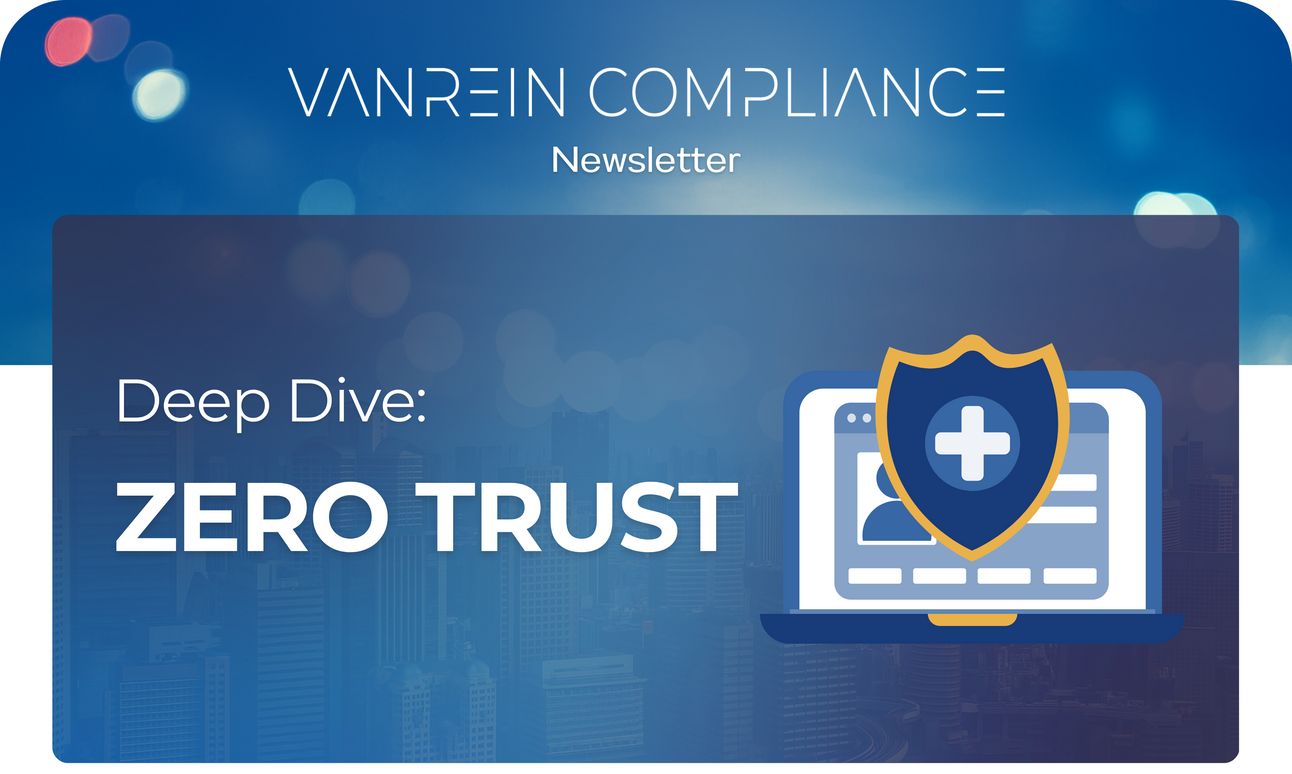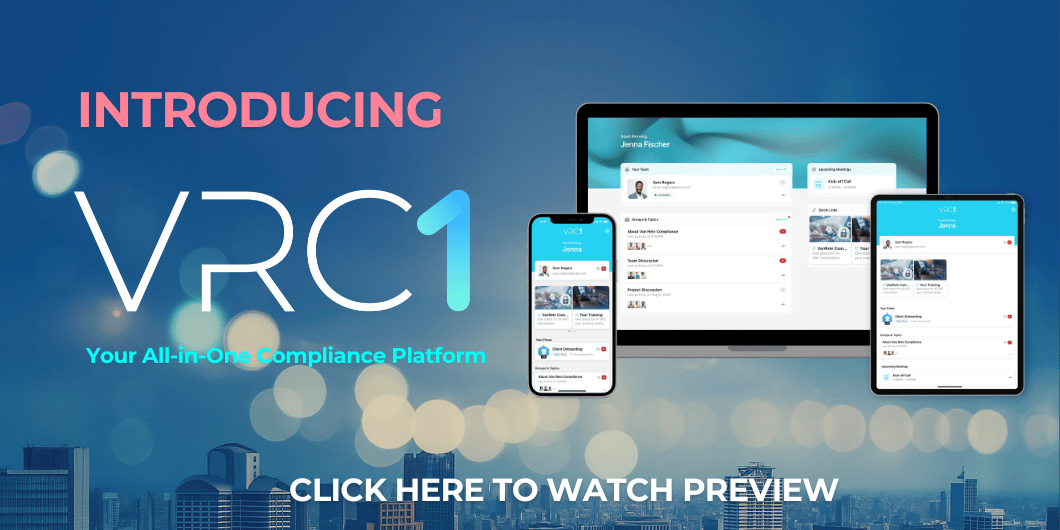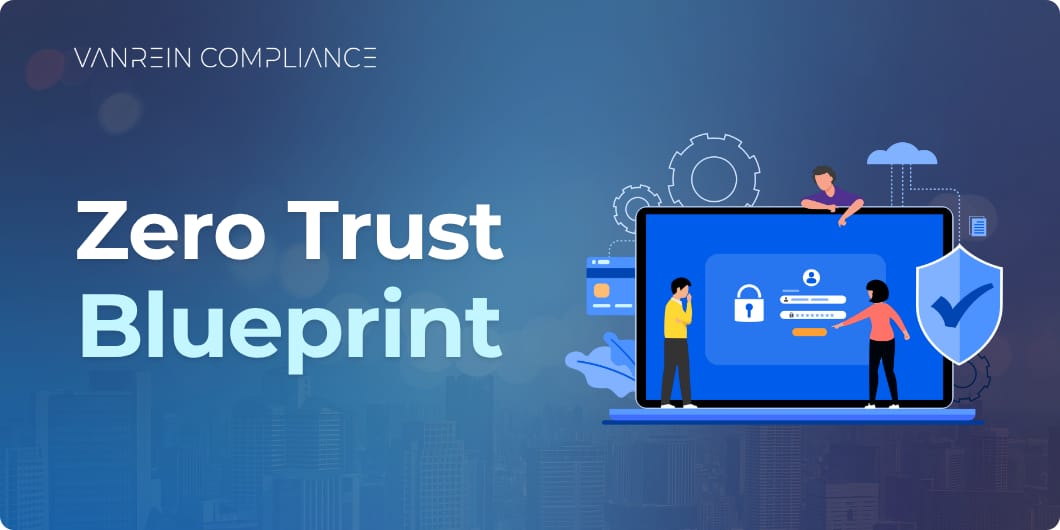- VanRein Compliance
- Posts
- The VRC Newsletter (July 15)
The VRC Newsletter (July 15)
Your 2025 Security Strategy Starts with Zero Trust
Zero Trust 101: It Matters in 2025
The old way of securing networks (trusting anything inside the perimeter) no longer works. Cybercriminals are exploiting stolen credentials, remote workforces, and cloud environments faster than traditional security models can respond.
The answer? Zero Trust.
Once seen as a “big enterprise” strategy, Zero Trust is now becoming a must-have framework for organizations of all sizes, including healthcare providers, SaaS vendors, and business associates who need to protect sensitive data and stay compliant.
🔍 What Is Zero Trust?
At its core, Zero Trust is simple: never trust, always verify.
Instead of assuming everything inside your network is safe, Zero Trust treats every user, device, and application as a potential risk. Access is granted only after verification and it’s continuously re-evaluated.
Key principles include:
Least Privilege Access – Users get only the access they need, nothing more.
Continuous Verification – Authentication isn’t just at login; it’s ongoing.
Micro-Segmentation – Networks are divided into smaller zones, limiting lateral movement if an attacker breaches one area.
Assume Breach – Systems are designed with the mindset that breaches will happen, so damage is contained.
🧩 Zero Trust Matters Now
The push for Zero Trust is accelerating because:
Hybrid and remote work increase endpoint vulnerabilities.
Cloud apps and SaaS platforms expand attack surfaces.
Regulators are catching up—frameworks like HIPAA, SOC 2, and ISO 27001 increasingly align with Zero Trust principles.
For example:
HIPAA’s 2025 Security Rule updates emphasize MFA, vendor oversight, and system inventories, all of which are Zero Trust-aligned controls.
SOC 2 and ISO 27001 audits now expect tighter access controls and continuous monitoring—core to Zero Trust.
⚠️ What Happens Without Zero Trust?
Organizations that still rely on perimeter security often:
Struggle to detect insider threats or compromised accounts.
Have flat networks, allowing attackers to move laterally once inside.
Face compliance gaps when auditors ask for evidence of access control or incident containment.
A single stolen credential or misconfigured vendor connection can lead to multi-million-dollar breaches and regulators won’t accept “we didn’t know” as an excuse.
📬 Already a VRC client? We can bundle our services saving you money and time!
✅ Who Needs Zero Trust?
The short answer: everyone handling sensitive data.
But it’s especially critical for:
Healthcare providers & BAs – To protect PHI and meet HIPAA 2.0 requirements.
SaaS and tech companies – SOC 2 and ISO 27001 audits often reference Zero Trust-like controls.
Legal, accounting, and insurance firms – Clients expect strong data segregation and access governance.
🎯 Final Thought
Zero Trust isn’t a single product. It’s a security mindset and a gradual adoption strategy. The good news? You don’t have to rebuild your entire infrastructure overnight.
In our next article, we’ll show you how to build your own Zero Trust blueprint—step by step, from assessment to monitoring.
Building Your Zero Trust Blueprint
Zero Trust may sound like a massive overhaul, but it doesn’t have to be. With the right plan, you can adopt Zero Trust gradually, starting with the highest-risk areas and expanding over time.
Here’s how to start building your Zero Trust framework, step by step.
1️⃣ Identify and Classify Your Assets
Before you can protect your systems, you need to know:
Who is accessing your data (users, vendors, partners)
What devices and applications are in use
Where sensitive data lives
🔹 Pro Tip: This step aligns perfectly with HIPAA 2.0’s mandatory system inventories—one list can serve both compliance and security needs.
2️⃣ Strengthen Identity and Access Management (IAM)
Identity is the foundation of Zero Trust. Focus on:
MFA everywhere – especially for admins and remote users
Least privilege – restrict access to what’s necessary for each role
Role-based policies – automate permissions for consistency
3️⃣ Assess Device and Endpoint Posture
Every device that connects to your network should meet your security standards:
Enforce antivirus and endpoint detection tools
Require encryption for laptops and mobile devices
Block or monitor unmanaged devices
4️⃣ Segment Your Network and Applications
Break down your environment into smaller zones:
Use micro-segmentation to isolate sensitive apps or databases
Limit lateral movement—if one system is compromised, others stay safe
5️⃣ Adopt Continuous Verification
Zero Trust isn’t a “set and forget” model. Build processes for:
Ongoing authentication and session monitoring
Real-time alerts for unusual behavior (e.g., logins from unusual locations)
Immediate revocation of access when risk levels change
6️⃣ Monitor, Review, and Adapt
Zero Trust is iterative. Schedule:
Regular posture reviews
Incident response drills
Vendor risk evaluations—your security is only as strong as theirs
📬 Already a VRC client? We can bundle our services saving you money and time!
✅ VanRein Compliance Helps You Prepare
VanRein Compliance guides clients through every stage of Zero Trust adoption:
Assessments & Gap Analysis – Identify where to start
Policy & Procedure Development – Align with HIPAA, SOC 2, or ISO 27001
Implementation Support – From MFA rollout to vendor risk monitoring
Ongoing Reviews – Keep your Zero Trust program audit-ready and evolving
🎯 Start Your Zero Trust Journey Today
Zero Trust isn’t just about cybersecurity. It’s about earning trust, meeting compliance standards, and protecting your reputation.






Reply